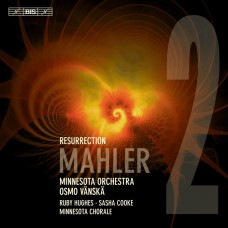|
Gustav Mahler's Second Symphony started life as a
single-movement tone poem called Todtenfeier
('Funeral Rites'). Completed in 1888 – one year before
Richard Strauss's Death and Transfiguration – it
echoed the composer's vision of seeing himself lying
dead on a funeral bier surrounded by flowers.
Deciding to use it as his opening movement, Mahler
didn't finish the complete five-movement symphony
until more than six years later, the longest time he
spent on any work. The huge scale of the work apart,
its weighty subject matter may well have contributed
to the slow progress: Mahler himself outlined a
scenario making references to the ultimate meaning
of life and death (first movement), recollections of
lost innocence and the desperation of unbelief
(second and third movements), the return to naïve
faith (fourth movement) and final redemption from
the last judgement (finale).
To convey this he took recourse to the human voice:
incorporating a solo alto in the 4th movement Urlicht,
he went on in the finale to risk comparison with
Beethoven's Ninth Symphony by introducing a choir,
as well as soprano and alto soloists. Minnesota
Orchestraand OsmoVanska have received praise for
their previous Mahler recordings ('Vanska and the
orchestra are among the finest exponents of Mahler's
music...', allmusic.com). The team is here joined by
soloists Ruby Hughes and Sasha Cooke and the
Minnesota Chorale in the deeply moving close to the
vast and tumultuous panorama that is his Second
Symphony..
Gustav Mahler (1860–1911)
Symphony No. 2 in C minor (1888–94)
'Resurrection'
1 ) I. Allegro maestoso. Mit durchaus ernstem
und feierlichem Ausdruck 23'17
2 ) II. Andante moderato. Sehr gemachlich 9'54
3 ) III. Scherzo. In ruhig fließender Bewegung – attacca – 10'50
4 ) IV. Urlicht. Sehr feierlich, aber schlicht – attacca – 5'28
5 ) V. Im Tempo des Scherzos. Wild herausfahrend –
Wieder zurückhaltend – Langsam. Misterioso 34'08
T T: 84'38 |
|


